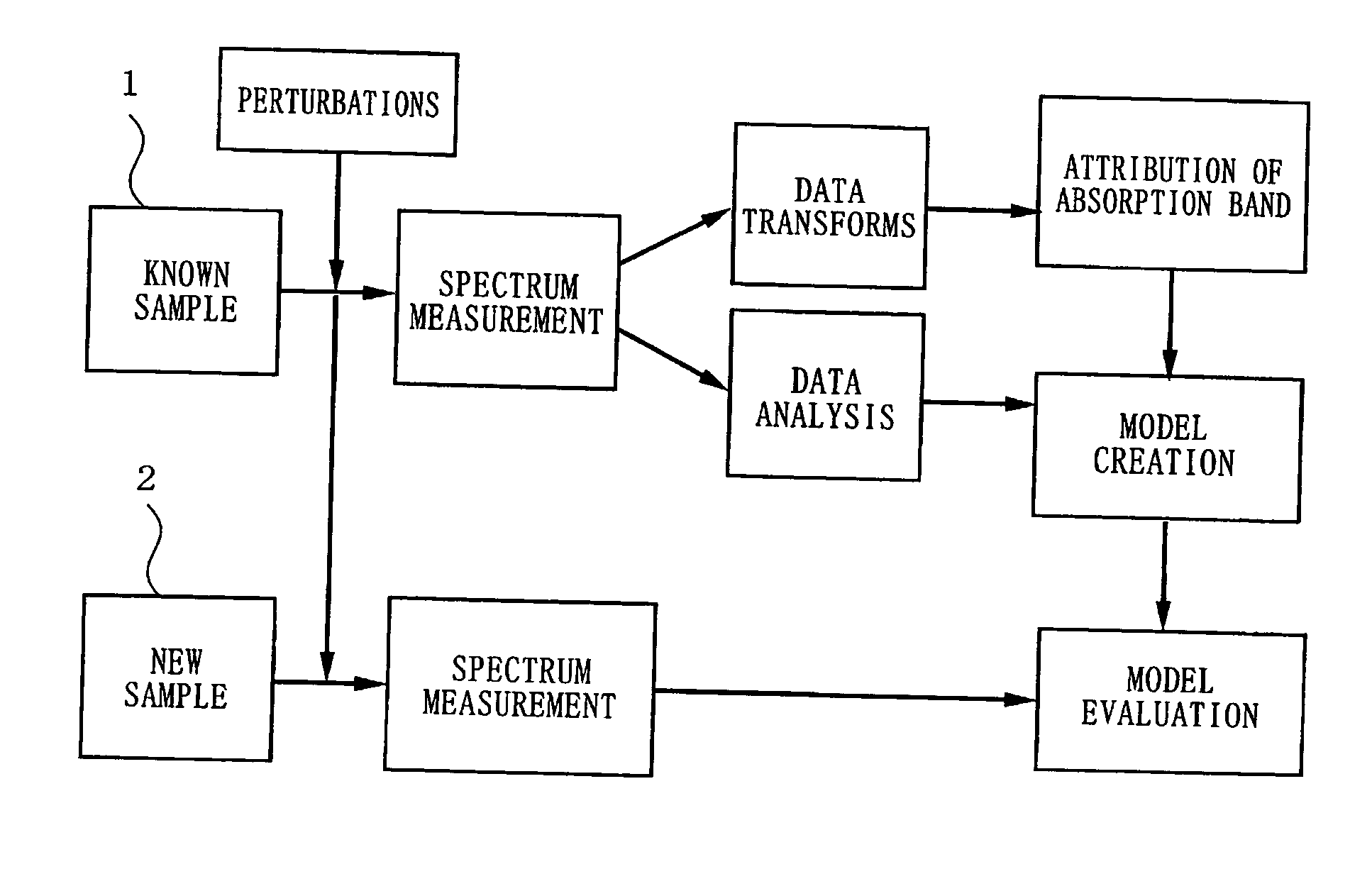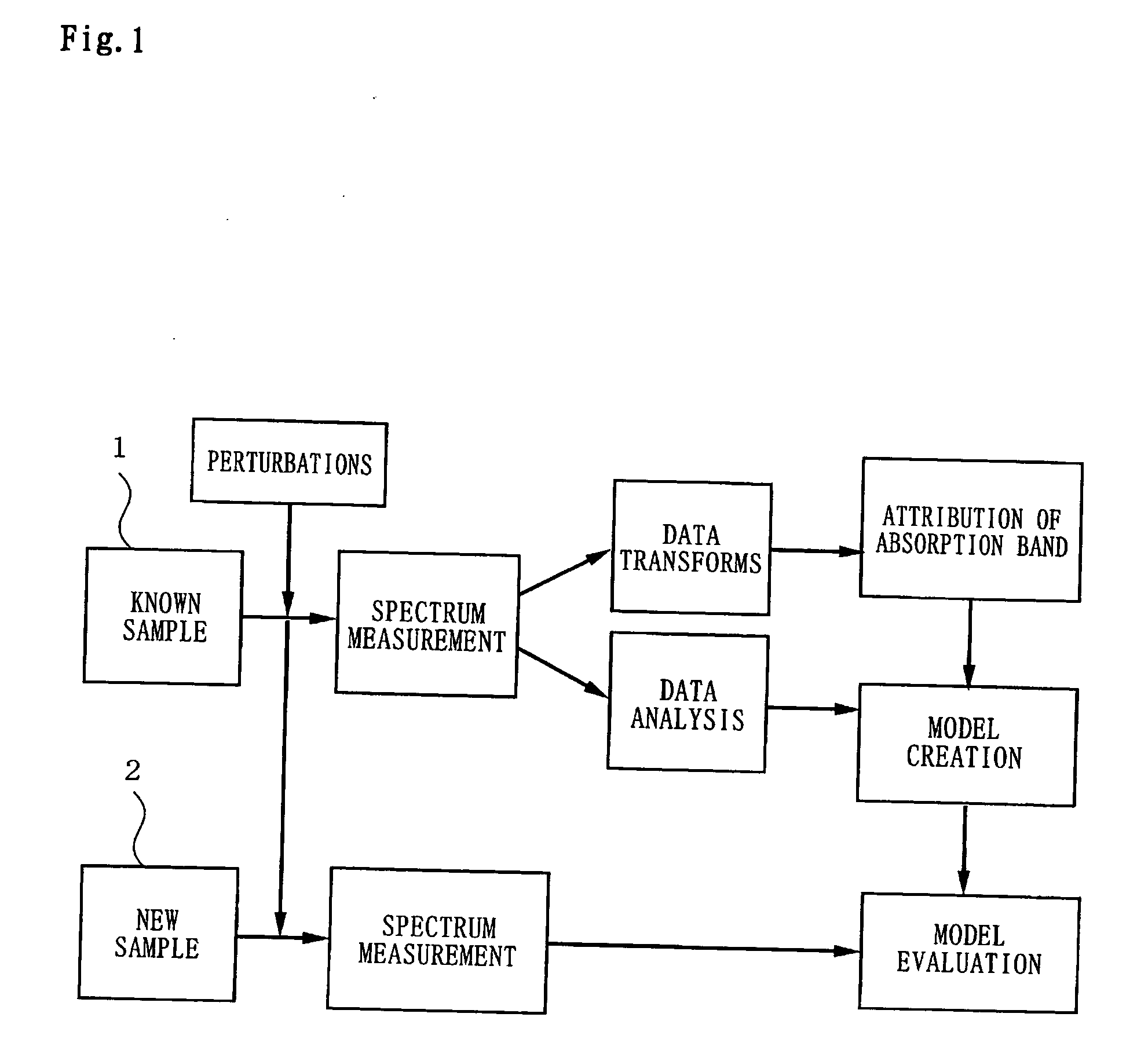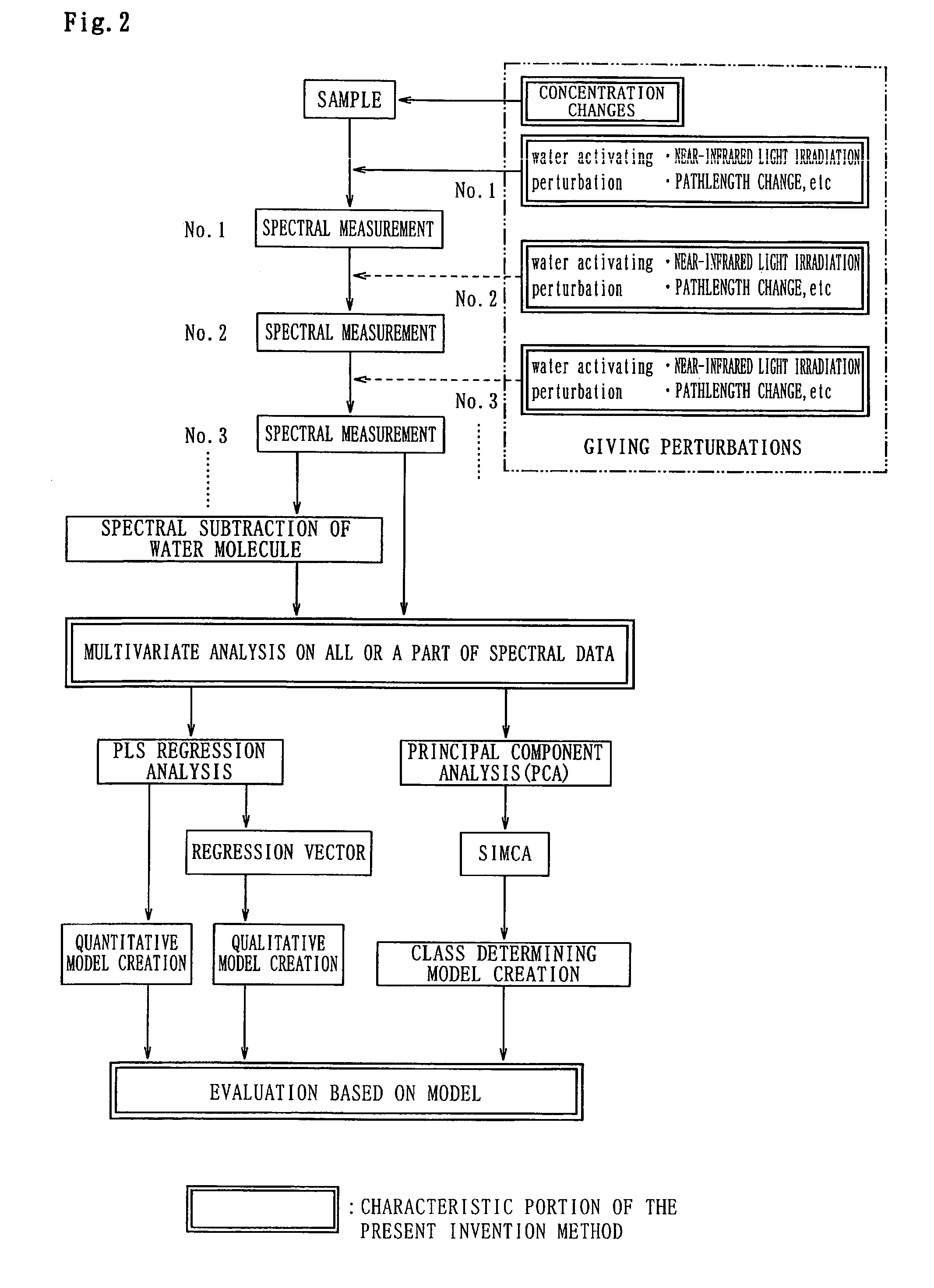Visible/Near-Infrared Spectrometry And Its Device
a technology of near-infrared spectrometry and spectrometry, which is applied in the direction of spectrometry/spectrophotometry/monochromators, instruments, optical radiation measurement, etc., can solve the problems of measurement accuracy, method limitations as to what components are measurable, and traditionally difficult to achieve, and achieve high-accuracy measurement of component characteristics.
- Summary
- Abstract
- Description
- Claims
- Application Information
AI Technical Summary
Benefits of technology
Problems solved by technology
Method used
Image
Examples
embodiment 1
[0101] Embodiment 1 is an example of determination between bacteria, CNS (coagulase-negative staphylococcus) and CPS (coagulase-positive staphylococcus) in sample specimen, and measurement of their respective concentrations.
[0102] Sample specimens in which respective bacteria are mixed in BPW (buffer peptone water) are prepared and those sample specimens are then injected in a silica cell of 1 mm.
[0103] The samples are prepared in such a way that respective referential concentrations of CFU (colony forming unit) are changed by tenfold steps, that is, in range from 10−1 to 10−10 The prepared samples are consecutively irradiated three times with light in the wavelength range from 400 nm to 2500 nm and spectrometry is then measured at 2 nm intervals.
[0104] When determining the presence of respective bacteria in the sample specimens could be performed in buffer peptone water solution, cow's milk or could be measured bacteria cultured in a Petri dish.
[0105] The spectrograph used here...
embodiment 2
[0123] Embodiment 2 is an example of the detection of “prion” protein PrP containing no metal component and prion proteins PrP (CU) and PrP(Mn) which have a metal component. In this embodiment, a spectrometry is conducted with light in the wavelength range from 400 nm to 2500 nm, light irradiation is added in succession every 15 minutes as a perturbation for a six hours and multivariate analysis is conducted by the PCA method and the SIMCA method.
[0124] A samples of PrP prion protein alone and a sample PrP (Cu) containing copper in its molecular structure, as well as a sample of PrP(Mn) containing manganese in the its molecular structure are prepared. Then multiple samples of prion solutions at different concentration levels are also prepared (single and pre-addition dilution). The respective dilution levels are 1 mg / ml, 0.5 mg / ml, 0.1 mg / ml, 0.05 mg / ml. Spectrometry is then conducted on the respective prion solutions.
[0125] Multivariate analysis is then conducted to obtain the sp...
embodiment 3
[0138] Embodiment 3 is an example of determination among prion proteins PrP without metal component and a sample specimen PrP(CU) containing copper as PrP(metal) with metal component. The determination is obtained by changing light path-length from 1 mm to 4 mm. In this embodiment, spectrometry is conducted with light in a wavelength range of 400 nm to 2500 nm. Light is irradiated for 48 hours and light irradiation is repeated every 6 hours. Multivariate analysis is then conducted by the PCA method and the SIMCA method. PrPinW(Cu) to which metal component Cu is added in the PrP water solution is then measured to determine how the change affects the measurement results.
[0139]FIG. 19 shows the results obtained when using loadings of the 3rd principal component (Factor 3) and the 9th principal component (Factor 9). FIG. 20(a) shows the results of SIMCA analysis. FIG. 20(b) shows interclass distances as determined by SIMCA and FIG. 20(c) shows the determination results.
[0140] Based on...
PUM
| Property | Measurement | Unit |
|---|---|---|
| wavelength range | aaaaa | aaaaa |
| wavelength range | aaaaa | aaaaa |
| wavelength range | aaaaa | aaaaa |
Abstract
Description
Claims
Application Information
 Login to View More
Login to View More - R&D
- Intellectual Property
- Life Sciences
- Materials
- Tech Scout
- Unparalleled Data Quality
- Higher Quality Content
- 60% Fewer Hallucinations
Browse by: Latest US Patents, China's latest patents, Technical Efficacy Thesaurus, Application Domain, Technology Topic, Popular Technical Reports.
© 2025 PatSnap. All rights reserved.Legal|Privacy policy|Modern Slavery Act Transparency Statement|Sitemap|About US| Contact US: help@patsnap.com



